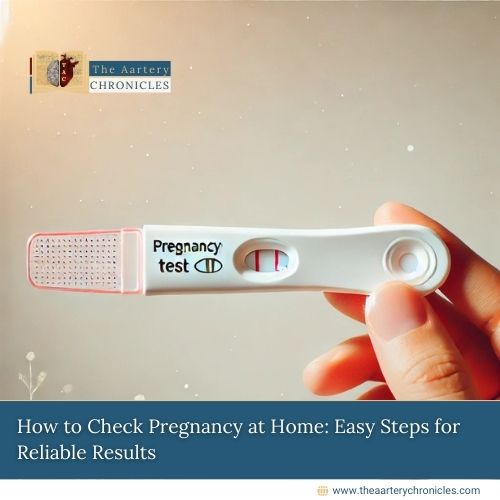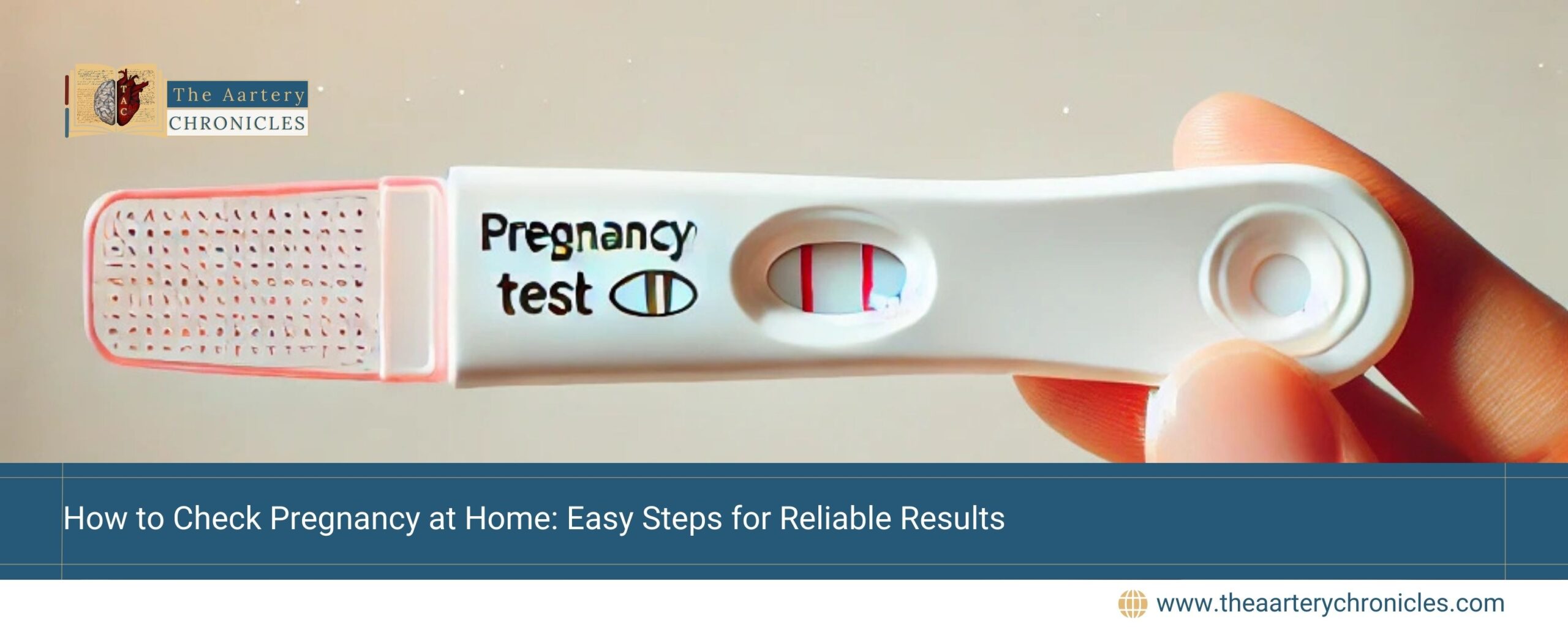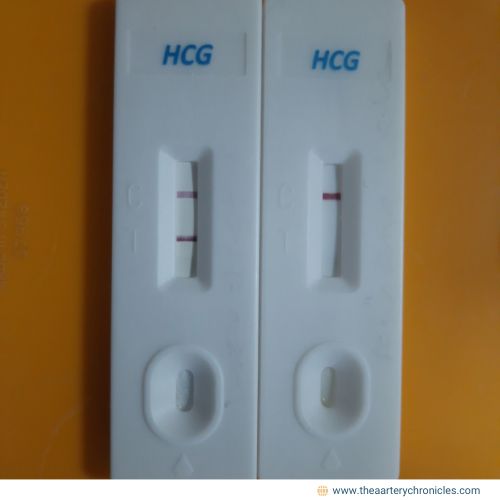

How to Check Pregnancy at Home: Easy Steps for Reliable Results
The pregnancy news can bring a smile and a wave of joy—or sometimes, a mix of emotions, especially if you’re not quite ready to start a family. In this article, we’ll walk you through the essentials of how to check for pregnancy at home and help you understand when and how to confirm your results. Let’s start from the beginning: what should you do if you miss your period, and what exactly is a missed period?
What is a Missed Period?
A missed period is one of the most common early signs of pregnancy. Normally, women ovulate once a month, starting around age 12 and continuing until around 47-51 years of age. This ovulation process is part of the menstrual cycle, which typically lasts 21 to 35 days, with menstruation itself usually lasting 2 to 7 days. Several factors like age, race, and even climatic conditions can influence the menstrual cycle’s length.
Delayed Period - Indication of Pregnancy?
A delayed or missed period is often one of the first indicators of pregnancy, especially if your menstrual cycle is usually regular. When a woman experiences a delay in her menstrual cycle by a week or more, the chances of pregnancy increase.
However, it’s important to remember that a delayed period can also result from other factors such as
- Stress
- Hormonal changes
- Illness
- Lifestyle changes
If you’re experiencing a delayed period, be mindful of other early pregnancy symptoms like:
- Breast tenderness: Swelling or sensitivity in the breasts is common in early pregnancy.
- Mood swings: Hormonal changes can lead to emotional shifts and mood swings.
- Nausea: Often called “morning sickness,” nausea can begin as early as two weeks into pregnancy.
- Increased urination: Pregnancy hormones increase blood flow, which can make you urinate more frequently.
- Fatigue: Higher progesterone levels can make you feel unusually tired.
- Bloating and cramping: Early pregnancy can cause bloating similar to premenstrual symptoms.
If you notice these symptoms along with a delayed period, consider taking a home pregnancy test to confirm.
Home Pregnancy Test (UPT): Your First Step
If you experience a missed period and some of the early symptoms listed above, it’s a good idea to take a home pregnancy test, also known as a Urine Pregnancy Test (UPT). This test detects the presence of human chorionic gonadotropin (HCG) in urine, a hormone that is typically elevated during pregnancy. The UPT is a convenient and accessible first step for many women to detect pregnancy.
However, if the result from a UPT is negative, it’s not always definitive. It’s advisable to repeat the test after 7-14 days or visit a healthcare provider for further testing. A blood test to measure human chorionic gonadotropin (HCG) can give a more accurate result, helping healthcare professionals confirm pregnancy.
Which Blood Test Confirms Pregnancy?
A blood test that measures rising levels of human chorionic gonadotropin (HCG) is one of the most reliable ways to confirm pregnancy.
- HCG is a hormone produced after implantation by the trophoblast cells, which surround the developing embryo.
- As pregnancy progresses, these cells eventually form the placenta, which supports the baby’s growth.
Blood tests for HCG can detect pregnancy earlier and with more accuracy than urine tests, often as soon as six to eight days after conception.
Blood tests offer two types of information:
- Qualitative Test – Confirms the presence of HCG (positive or negative).
- Quantitative Test – Measures the amount of HCG to help determine how far along the pregnancy is, providing more detailed information than a urine test.
This is particularly helpful if you’re unsure about the timing of your pregnancy or if there are concerns about an ectopic pregnancy.
Different Methods to Check Pregnancy Regularly
While the urine pregnancy test (UPT) is the most commonly used home method, women have historically explored various ways to confirm pregnancy. However, it’s important to emphasize that medically approved methods, such as blood tests and ultrasound, are the most reliable and accurate for confirming pregnancy.
How to Confirm Pregnancy at Home?
Urine Pregnancy Test (UPT)
A urine pregnancy test (UPT) detects the presence of human chorionic gonadotropin (HCG) in urine, a hormone that rises after conception. While a UPT can provide results as early as 6-10 days post-conception, it’s best to take the test after a missed period for the most accurate outcome.
HCG Levels: Normal vs. Ectopic Pregnancy
The test detects HCG, a hormone that typically doubles every 48-72 hours in a normal pregnancy. In the case of an ectopic pregnancy, HCG levels usually increase more slowly, rising by approximately 66% over the same period.
How to Use a Home Pregnancy Test (UPT)

Here’s a step-by-step guide to using a urine pregnancy test (UPT):
Collect a Urine Sample: Use a clean, dry container to collect urine, or urinate directly onto the test strip, depending on the kit instructions.
Apply the Test: Place one or two drops of urine onto the chemical strip or dip the test stick into the urine for a few seconds, following the specific instructions provided with your kit.
Wait for Results: Allow the test to process for the recommended time, usually 3-5 minutes.
Interpret the Results: Two red lines typically indicate a positive result, meaning you may be pregnant. One line generally means a negative result.
Tip: For best results, take the test in the morning, as urine is most concentrated at that time, providing more accurate results.
How to Confirm Pregnancy Using Salt?
In the past, when home pregnancy tests weren’t as accessible, some people used a salt pregnancy test as a traditional method. The concept was that when urine was mixed with salt and formed a milky or cheesy texture, it indicated pregnancy due to the rise in HCG levels.
However, this method is not scientifically validated and lacks medical evidence. While it may be convenient for some, it should not be relied upon for pregnancy confirmation. If you suspect you’re pregnant, it’s always best to use an official home pregnancy test (UPT) or consult with a healthcare provider for a blood test.
How to Confirm Pregnancy Using Fingers?
However, this method is not scientifically validated and lacks medical evidence. While it may be convenient for some, it should not be relied upon for pregnancy confirmation. If you suspect you’re pregnant, it’s always best to use an official home pregnancy test (UPT) or consult with a healthcare provider for a blood test
Some believe the position and texture of the cervix can offer clues to pregnancy. Here’s how this method is said to work:
- Wash Your Hands: Thoroughly clean your hands with soap and water.
- Locate the Cervix: Insert your index or middle finger into the vagina to feel the cervix, the small opening at the lower end of the uterus.
- Check for Changes: During pregnancy, the cervix is typically higher, softer, and more closed. Additionally, cervical mucus thickens and increases.
While some women believe this method helps confirm pregnancy, it’s important to note that these signs are not reliable and cannot replace medical tests. Always consult a healthcare provider for an accurate diagnosis.
How to Confirm Pregnancy by Touching Your Stomach?
In the early stages of pregnancy, some women may notice changes in their abdomen. They may feel firmness, bloating, or even a slight bulge in the lower abdomen. Increased blood flow to the area and hormonal changes can also cause these sensations.
However, while bloating and tenderness are common early pregnancy symptoms, they can also occur due to digestive issues or hormonal fluctuations unrelated to pregnancy. Touching your stomach is not a reliable method for confirming pregnancy.
How to Confirm Pregnancy at a Hospital or Clinic?
If you’re unsure or need confirmation, a visit to the doctor or clinic is the best next step.
- Pelvic Exam: A healthcare provider may perform a pelvic exam to check for abnormalities, such as ovarian cysts or fibroids, which can sometimes mimic pregnancy symptoms.
- Ultrasound (USG): An ultrasound uses sound waves to create an image of the fetus in the womb. It’s one of the most reliable ways to confirm pregnancy and assess fetal development.
- Transabdominal Ultrasound (TAS) is typically done after 5-6 weeks of pregnancy.
- Transvaginal Ultrasound (TVS) is often used earlier in the pregnancy for more detailed images.
- Ultrasound is safe and does not use harmful radiation, unlike X-rays or CT scans.
- Amniocentesis & CVS: For certain pregnancies, particularly those at high risk for genetic disorders, tests like Amniocentesis or Chorionic Villus Sampling (CVS) may be performed between 11-13 weeks of pregnancy.
- Fetal Scans: Other tests such as anomaly scans or doppler scans are performed later in the pregnancy to assess fetal growth and health.
It’s important to follow your healthcare provider’s advice and schedule ultrasounds and other tests as recommended to ensure the health of both you and your baby.
Conclusion
Confirming pregnancy at home is a convenient and quick first step, but it’s important to use medically approved methods for accurate results. While home pregnancy tests (UPT) are the most reliable way to check for pregnancy, methods like the salt test, cervix checking, and stomach touching should not be relied upon as they lack scientific backing.
If you get a positive result from a home pregnancy test, or if you’re unsure about the result, visit a healthcare provider for confirmation and further guidance. Blood tests and ultrasounds offer more accuracy and provide important information about the health of your pregnancy.
- Pregnancy tests – Clevelandclinic.org | https://my.clevelandclinic.org/health/diagnostics/9703-pregnancy-tests
- Ultrasound in pregnancy- Clevelandclinic.org | https://my.clevelandclinic.org/health/diagnostics/9704-ultrasound-in-pregnancy
- Home pregnancy test with salt – Healthline| https://www.healthline.com/health/pregnancy/home-pregnancy-test-with-salt

TAC Desk
Reviewed By: Dr Aarti Nehra








